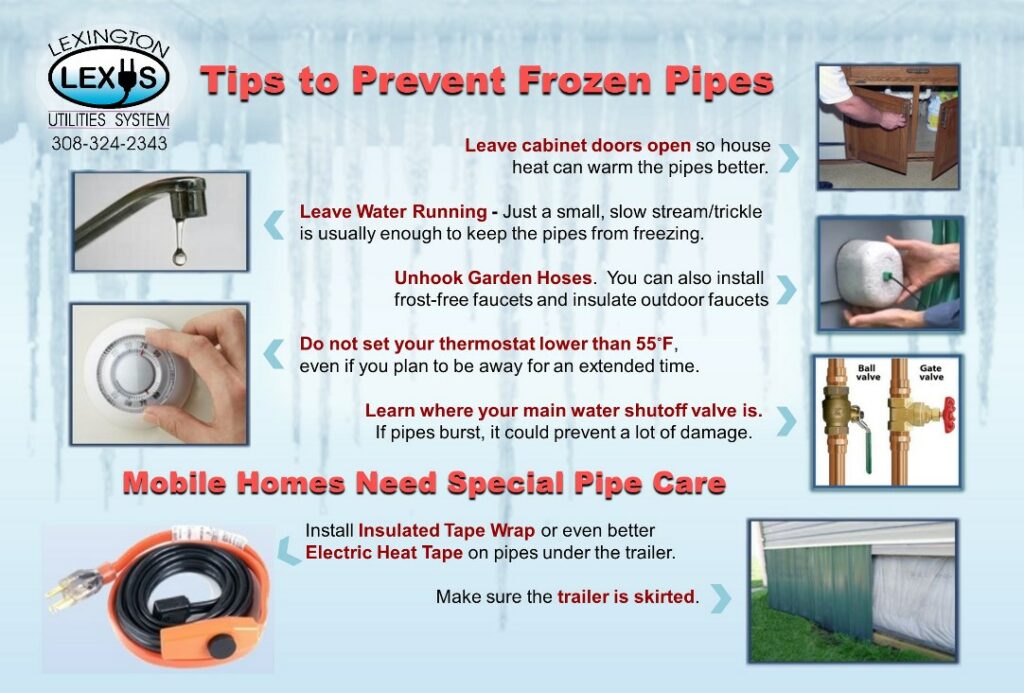

Other methods that keep your home warm for comfort can also lessen the chance of freezing pipes. These include insulation, weather stripping, caulk, and energy efficient windows.
If pipes run through attics, crawl spaces, garages, etc., in the long term it may be worth the expense to have those pipes moved underground. Contact your local plumber.
To Thaw Frozen Pipes
If you turn on a faucet and only a trickle comes out, it may be frozen. Find the suspected frozen area of the water pipe. Likely places include pipes running against exterior walls or near where your water service enters your home through the foundation.
Keep the faucet open. As you treat the frozen pipe and the frozen area begins to melt, water will begin to flow through the frozen area. Running water through the pipe will help melt more ice in the pipe.
Apply heat to the section of pipe using an electric heating pad wrapped around the pipe, or an electric hair dryer, a portable space heater (kept away from flammable materials), or by wrapping pipes with towels soaked in hot water. Do not use a blowtorch, kerosene or propane heater, charcoal stove, or other open flame device, as these create serious safety problems.
Apply heat until full water pressure is restored. If you are unable to locate the frozen area, if the frozen area is not accessible, or if your efforts fail to thaw the pipe, call a qualified plumber.
Check all other faucets in your home to find out if you have additional frozen pipes. If one pipe freezes, others may freeze, too.
Remember, the City maintains main water pipes only, usually running under streets and to the edges of properties. From there and into the building or trailer home, pipes are the responsibility of the owner or tenant.





